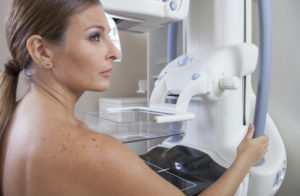
Why Start Mammograms at 40?
 Turning 40 is a big deal – 4 decades of life should be reason for celebration! Everyone has a different approach to aging – some with #lifegoals, others with denial. (We know one funny lady who has turned 39 repeatedly… for more than 20 years!) Whether it’s arbitrarily valued socially or taken as a serious milemarker in terms of physical health… we pay attention to that birthday!
Turning 40 is a big deal – 4 decades of life should be reason for celebration! Everyone has a different approach to aging – some with #lifegoals, others with denial. (We know one funny lady who has turned 39 repeatedly… for more than 20 years!) Whether it’s arbitrarily valued socially or taken as a serious milemarker in terms of physical health… we pay attention to that birthday!
As doctors who specialize in trying to find breast cancer at its smallest and most treatable, 40 is a special age.
Have you wondered in this time of conflicting and confusing recommendations from different groups on screening mammography why we recommend 40 as the start date for annual screening mammography for women of average risk, supporting the guidelines of the Society for Breast Imaging and the American College of Radiology?
There is solid science behind that recommendation: 40 is the age when breast cancer risk begins to increase sharply for women, regardless of whether you have a family history or not. This risk for breast cancer will continue to rise – until about the age of 75.
By now, we bet you are familiar with the 1-in-8 breast cancer statistic: that’s how many women will get breast cancer in their lifetimes. What you might not know is that 1 out of every 6 breast cancers occurs in women in their 40’s. Beginning screening at age 40 will save the most lives. That for us is the key, and why we will continue to recommend annual screening with mammography starting at that age.
While these numbers can be staggering or even scary, the great news is that with ever-improving technologies (like 3d mammography) and proactive annual screenings, the survival rate of early stage breast cancers can hover at nearly 100% (!!!).
So, if you have a milestone birthday coming up, you have some self-health-caring to do. With just a few seconds of compression and the compassionate care of your local radiology technologists and doctors, you can be your own health hero. Talk about a great #lifegoal!
Curious to learn more? Check this short video.





